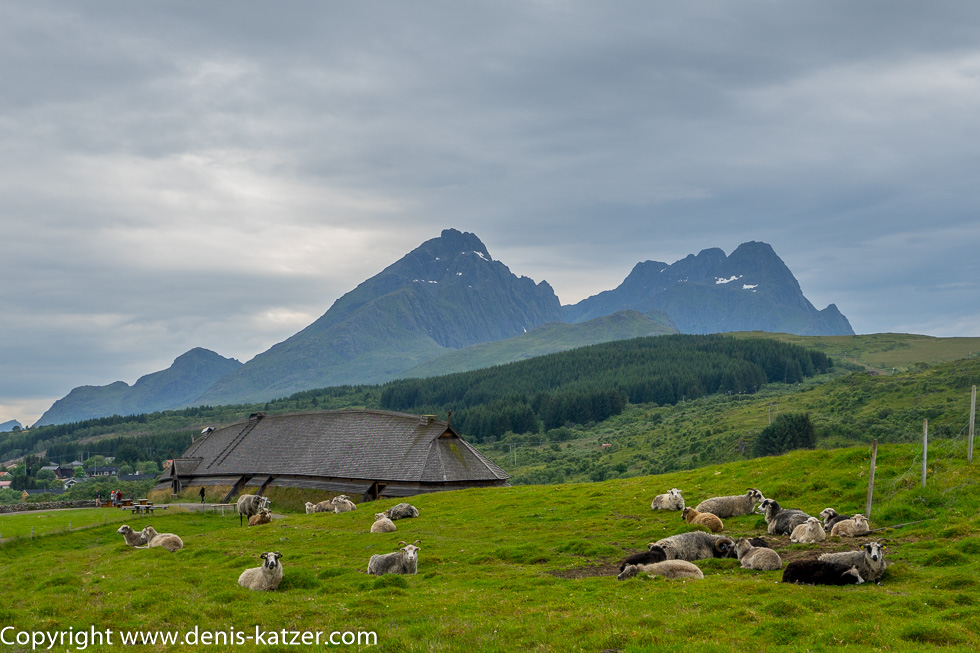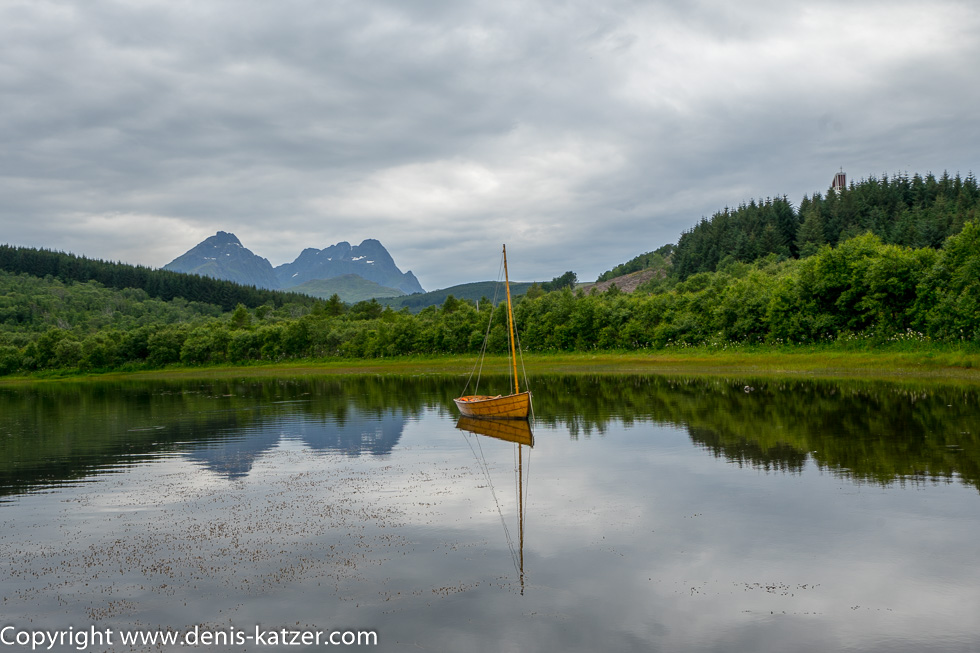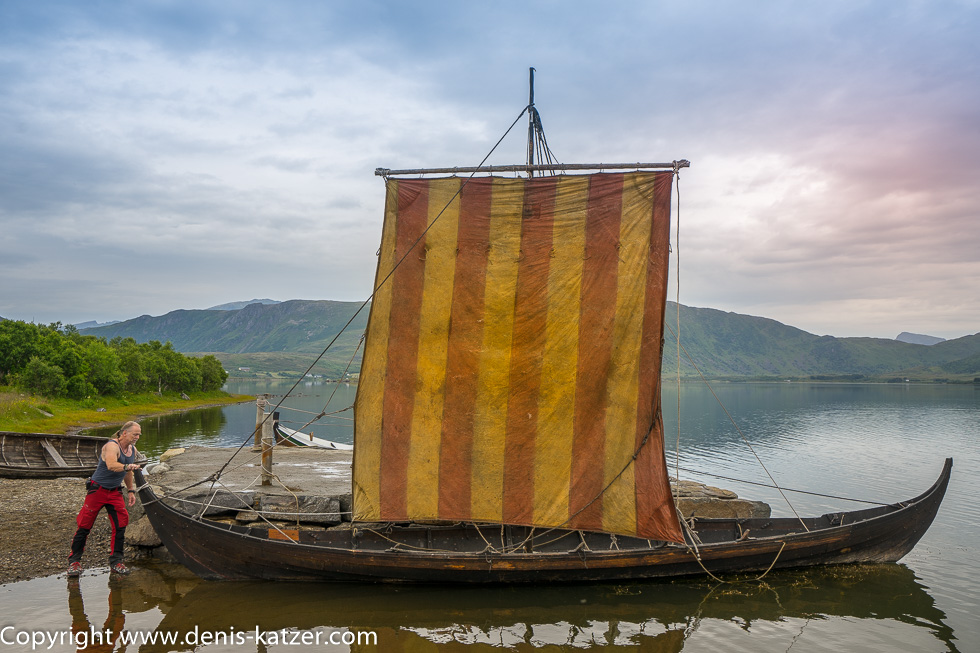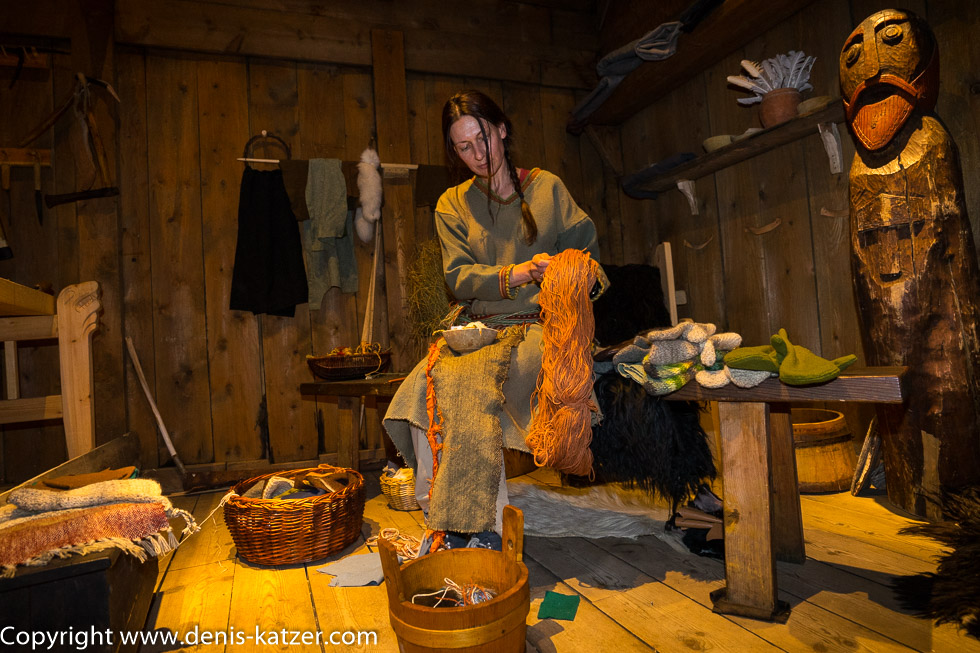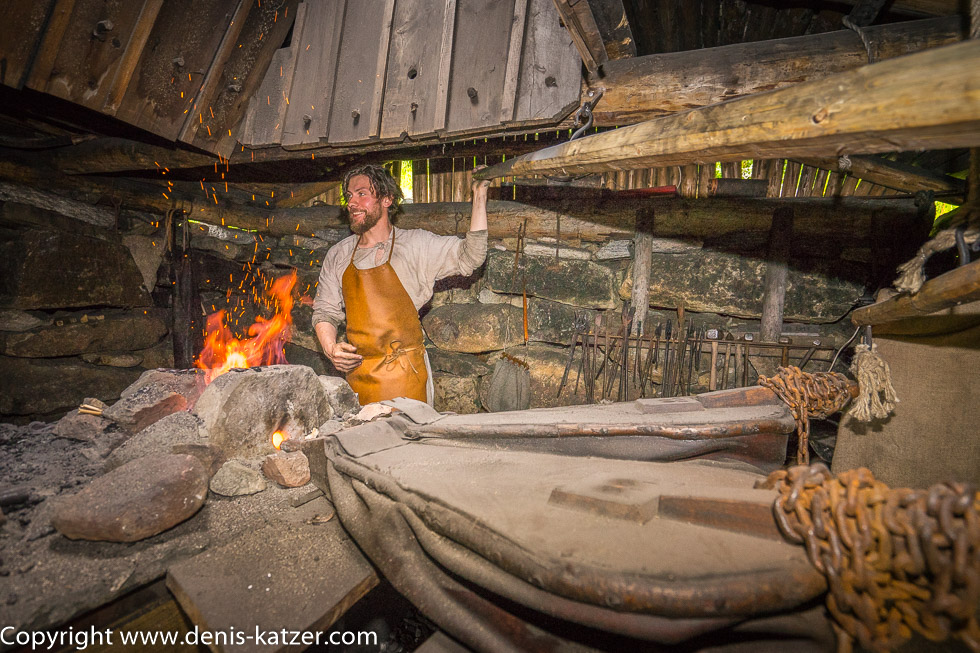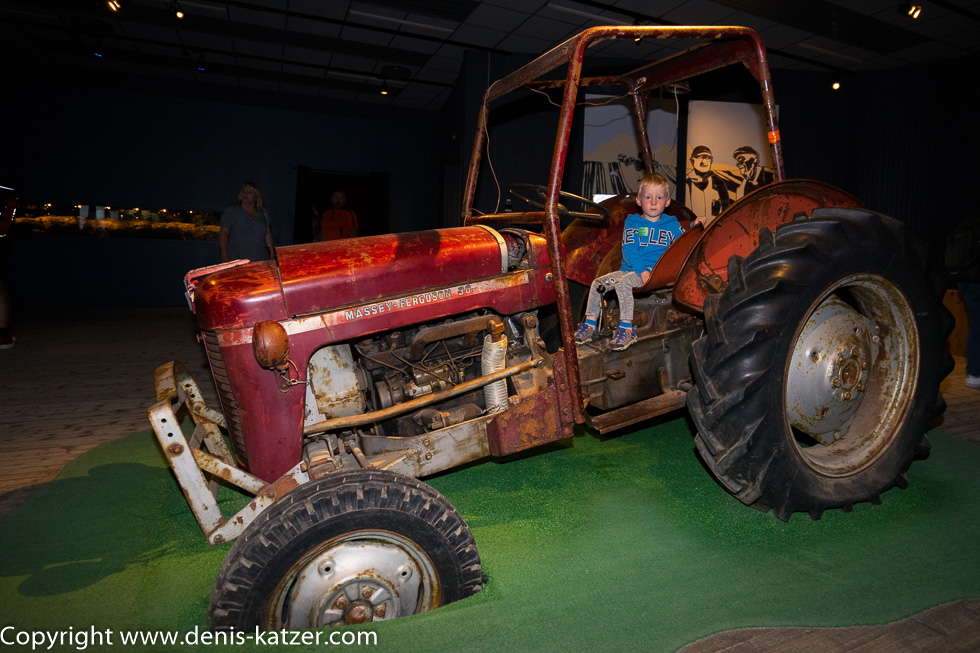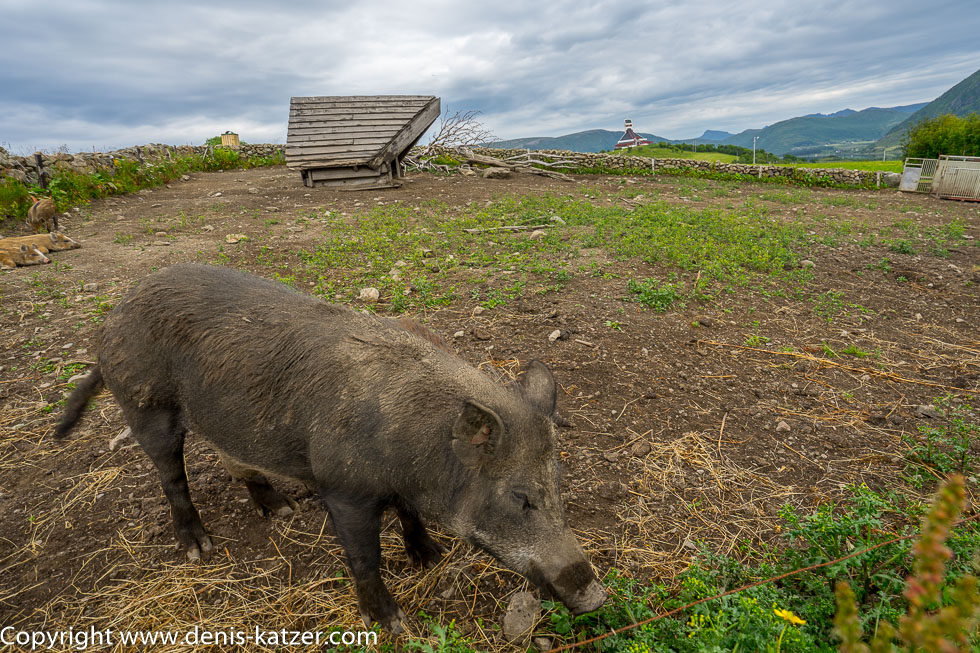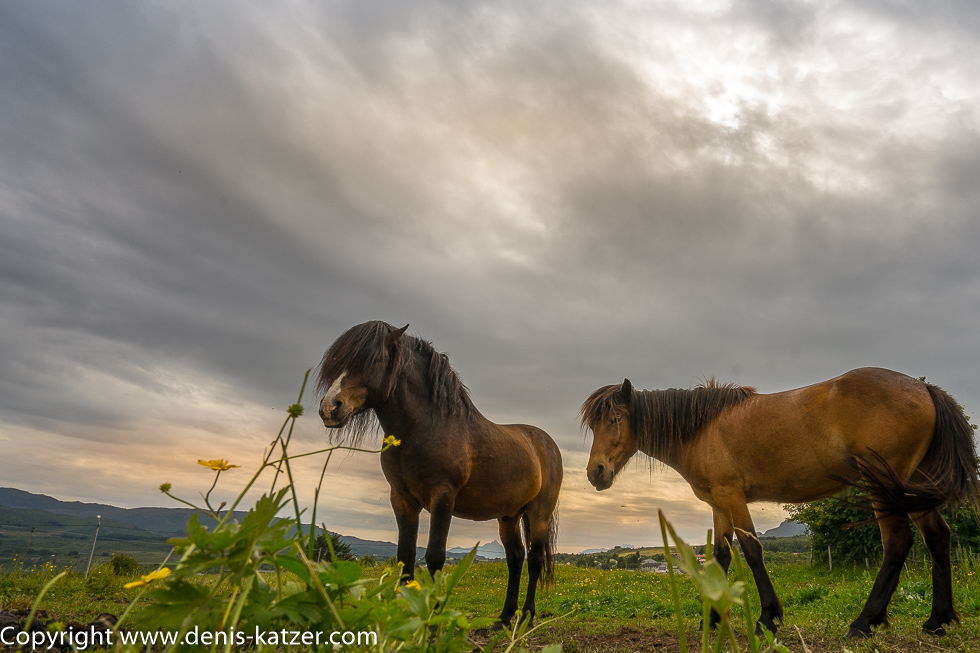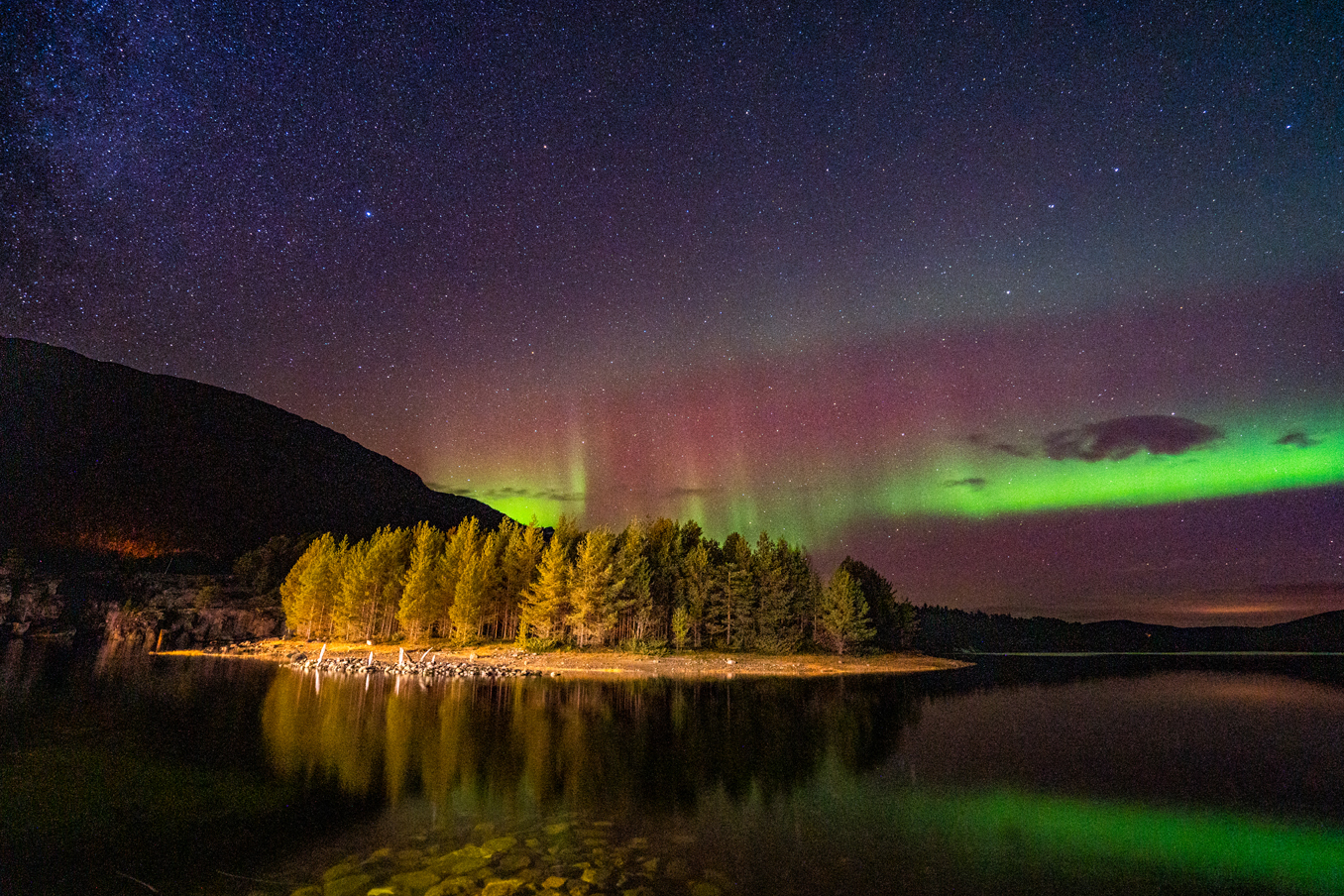
The Viking chieftain of Borg
N 68°14'38.0'' E 014°36'29.8'
Date:
30.09.2020
Day: 059
Country:
Norway
Location:
Super street parking space
Daily kilometers:
72 km
Total kilometers:
5212 km
Soil condition:
Asphalt
Ferry
0
Bridge crossings:
4
Tunnel passages:
3
Sunrise:
07:04
Sunset:
18:39
Temperature day max:
14°
Night temperature min:
9°
Departure:
09:30
Arrival time:
18:00
(Photos of the diary entry can be found at the end of the text).
Click here for the podcasts!
Link to the current itinerary
(For more posts click on one of the flags in the map)
We are only a few kilometers away from Borg, the famous Viking museum in Lofoten. As we already visited the museum on our exploratory trip last year, we know that there is free Wi-Fi there, which we urgently need for a few major updates. A reason for us to leave the stony pitch near Eggum this morning. “The museum only opens on Wednesdays and Saturdays in the off-season,” says Tanja. “Do you know what time it is?” I ask. “I’m not sure, but I think it’s from 12:00 to 16:00.” “Okay, then let’s get there on time,” I reply and close my laptop.
After a short stretch of perhaps 10 kilometers, we reach the former Viking settlement of Borg. It was one of an estimated 10 or 15 chiefdoms in northern Norway that existed here 1,900 years ago. Borg consisted of more than 115 farms, in which, according to today’s estimates, the considerable number of 1,800 people lived. We park below the impressive reconstruction of the largest longhouse of the entire Viking Age. “Impressive,” I say, walking towards the 83-meter-long wooden house built on a hill, where a powerful and wealthy chieftain once ruled with his wife, family and servants. According to the archaeologists, this longhouse was built between the 5. and It was built in the 6th century and used for at least 400 years. When we were here last year, it was teeming with visitors, now we see just four guests in the souvenir and restaurant area. “That doesn’t look good for the operators. I hope they can get through it financially,” I say. “They will pay more this year,” Tanja is certain. “It’s sad what Corona is doing,” I reply, entering the imposing, large, windowless interior of the nave. We are immediately greeted by warm, gloomy light and feel as if we have been whisked back to the year 600 AD by a time machine. Dried stockfish hangs from the ceiling, pots hang above the large fireplace and reindeer and red deer skins lie above the benches. “I think that in Viking times there were also the pelts of wolves, lynxes, Arctic foxes, lemmings, brown bears and musk oxen,” I say, as the Vikings also lived from hunting and these animals were certainly much more numerous than today. In one section of the nave we see historical robes, battle axes, shields, swords, armor and helmets with nose guards. An information board indicates that you can arm yourself with a shield and sword for a photo. “Would you like to?” asks Tanja. “Sure, why not,” I reply, putting on my iron helmet, picking up my spear and shield and then roaring terribly into the camera like a bloodthirsty, attacking Viking. “Sounds really real,” laughs Tanja. “It’s a good thing there are no visitors,” I reply, also laughing. As we continue our exploration of the beautifully rebuilt longhouse, we are presented with nails, iron knives, loom weights, glue stone vessels and spinning wheels. Shards that were once valuable glass cups imported from England were also found here.
We sit down on one of the benches and take in the strange atmosphere. “Do you know how this settlement was discovered?” asks Tanja. “The internet says that it was the farmer Frik Harald Bjerkli who found old pottery shards while plowing his fields in 1981. He came across the northernmost and largest Viking settlement in Norway purely by chance.” “Is that why they put the old tractor in the front room?” “I think it’s Frik Harald Bjerkli’s original tractor,” I reply. “It’s crazy what we experience in Norway. Sometimes I feel like we’re the main characters in an old movie,” says Tanja, glancing around the cozy interior of the longhouse. “Did it really look like that?” Tanja breaks our silence a few minutes later. “They certainly tried to build the longhouse as true to the original as possible. However, the house had been inhabited for centuries. It certainly didn’t have the character of a museum, so it looked much more authentic and was more worn and dirty everywhere.” “Dirtier?” “The back part of the house was used as a cattle shed. That’s where they protected their animals from the extreme winter. One of the advantages of having livestock in the house was the body heat that radiated from the cattle into the room. The disadvantage was the stench of the manure, so it smelled different than it does now.” “I can well imagine. Having spent the night in animal stables often enough over the past 30 years of travel and sometimes lived there for a while, I know exactly what you mean.” “Yes, it’s crazy what we’ve been able to experience in our lives,” I reply, thinking back to how we crossed the lowlands of Nepal with our elephant cow Bawan Kumari (maiden of the skies) and often spent the night in simple goat and sheep pens. “I can also well imagine how the Viking women cooked for their men on the fireplaces,” Tanja takes me back from my memories to the longhouse minutes later. “Yes, I can imagine, but the fire pits looked different to the ones here. There were long fire trenches with fire pits that were particularly deep at the end of the hall. Today it is believed that the deep fire pits were used for larger festivities and religious ceremonies. No ashes have been found in the pits at the end of the hall. They were probably lined with heated stones on which meat was placed and then covered to cook. This explains the peat that the archaeologists discovered around the fire pits. “It’s always fascinating to me how modern archaeology can reconstruct the past. But what I wonder is how the archaeologists knew that these people were rich here? They must have found valuable objects and if so, I wonder why the people didn’t just take them with them when they left the longhouse?” “I believe that the Vikings often hid their riches in the floor of their house. Perhaps the person who hid it died on a war campaign and his relatives didn’t know about the treasure until archaeologists examined such a place meticulously a thousand years later. But I also know that people deliberately buried figures of gods under pillars to ask for protection for themselves and their homes. In any case, they found beads and a ring made of gagat, which was believed to have magical, ominous powers. Inside the floor plan of the house, the researchers discovered a small but spectacular treasure trove of gold. Particularly noteworthy are three gold amulets depicting two people embracing. It is assumed that this is the fertility goddess Freya. She was a teacher and sorceress and the goddess of spring, happiness and love. This was certainly an extraordinary, valuable find, and the masters of the house at the time certainly did not simply place the goddess on a shelf or hang her on the wooden wall, but hid her well and perhaps only took her out for special ceremonies. They also found an amulet from Gerd. According to Norse mythology, she was the daughter of the giant Gymir and was famous for her beauty. Whatever the case, such excavated objects are evidence of considerable wealth, and if someone owned something like this, they must also have had extensive trading connections,” I recapitulate.
We leave the longhouse and walk down the ridge to the shore of the nearby gulf. “Must really have been an important chief who once lived here,” I say, standing in front of the replica of a boathouse. “Because he had a boathouse?” asks Tanja. “The outlines of three boathouses have been discovered here. But perhaps there were more. The largest naus, as the boathouses where the longboats were stored and maintained in winter, was 30 meters long. This means that it could accommodate a large warship with room for 70 warriors with their weapons and shields. And that was only one of perhaps three ships. Anyone who could gather so many warriors around him must have been a powerful chieftain with political influence in those days,” I think. We look out over the sea and see a replica of a Viking ship on the shore, rocking in the gentle waves. In my imagination, I see fierce warriors in their full armor running back and forth across it. They are getting ready for a war or a raid. I can hear their raucous laughter, their desire to embark on a great, dangerous adventure. Perhaps the greed to make rich booty on the coasts of Scotland, Ireland or England, to abuse women, to capture young men, women and children to sell them on the slave markets? I see some men waving to their families. Then the warship casts off. Loud commands are shouted. The oars plunge into the sea. The water foams up in front of the bow of the longship. The experienced captain shouts orders to his man at the helm. Who knows whether he knew the Icelander Leif Eriksson, who discovered Greenland around the year 1000 and was thus the first to set foot on North America? The boat slowly moves out of sight of those standing on the shore. It steers through the only narrow, river-like water connection into the next bay until it reaches the North Sea. Only those who were very familiar with these waters found the lake access to the settlement of Borg. “It was certainly a tactical decision by the chief of the time to build his longhouse on a hill at the foot of which there was a barely accessible sea inlet,” I say admiringly.
Before the museum closes its doors, let’s send some updates,” says Tanja, which is why we leave the historic shore of the Norsemen and climb back up the hill. We enter the almost deserted reception and restaurant area of the museum and sit down at one of the 20 free tables. “Are you Tanja and Denis?” a young woman asks us in German as soon as we have logged into the Wi-Fi. We look up in astonishment. “Yes. How do you know us?” I ask in astonishment. We’ve seen your Terra Love a few times in the last few weeks. Do you mind if we have a little chat with you?” “No, no,” says Tanja. “My name is Laura, and this is my boyfriend Mark,” introduces the Italian, who grew up in Germany. Although we don’t have much time because the museum is about to close, we have a lively chat with the likeable couple. They have been traveling in their rented motorhome for a few months and would love to travel for longer and discover the world for themselves. During our conversation, we try to give them a few suggestions and tips. We exchange all sorts of information about where from and where to. “Have you been to Vesterålen?” they ask, among other things. “Vesterålen?” asks Tanja. “Vesterålen is a region and part of a group of islands about 300 km north of the Arctic Circle. At the northern end of the archipelago is the town of Andenes. From there, you have one of the best opportunities to see sperm whales.” “Sperm whales?” I ask with interest. “Yes, sperm whales,” Laura answers enthusiastically. “How far are the islands from here?” I ask attentively. “Maybe 250 or 300 kilometers from here,” Mark estimates. “Not far then. Well, maybe we’ll include it on our way to the North Cape,” I think, glancing at my watch. As the museum’s doors are about to close and we might not be able to send an update again, we apologize to the two of them. “We didn’t want to keep you,” says Mark. “You didn’t stop us.” “It was great to exchange a few words with you. Maybe until the sperm whale safari?” they say goodbye in a friendly manner…
